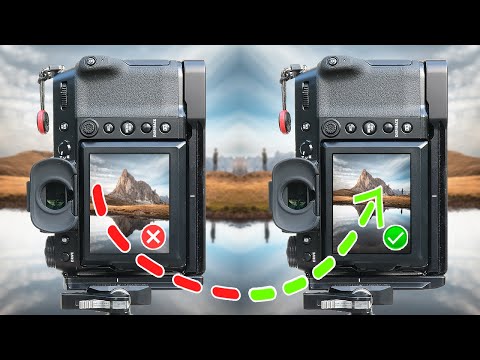
Landscape photography can be incredibly rewarding, and it sure is one of my favorite genres. But if you’re new to it, there are plenty of obstacles and mistakes at first. In his latest video, Mark Denney points out some of the most common mistakes beginners make while also revisiting his older video from 2019. Whether you’re a complete novice or looking to refine your skills, understanding these common pitfalls can help you avoid frustration and start creating stunning landscape photos.
Rule of Thirds… Always?
In 2019, Mark advised relying on the famous Rule of Thirds for composing landscape photos. It was his go-to technique, which he believed would instantly elevate any beginner’s image. However, after years of experience and countless landscapes captured, his perspective has shifted.
Now, Mark encourages you to experiment more. After all, it’s not interesting to have all the photos composed the same. While the Rule of Thirds remains a solid compositional foundation, Mark urges you to explore a broader toolbox of techniques. Leading lines, for example, can guide the viewer’s eye directly into the heart of the scene. Reflections can introduce a sense of symmetry and tranquility. Framing, like using a natural arch or a foreground element, can draw attention to your subject. And don’t forget foreground interest. A bed of vibrant wildflowers or a scattering of interesting rocks in the foreground can add depth and context to your landscape.
By embracing these various approaches, Mark argues, photographers can unlock their creativity and escape the monotony of relying solely on the rule of thirds.
New gear focus
Five years ago, Mark’s message was clear: gear acquisition syndrome is real. Aspiring landscape photographers shouldn’t get caught up in the endless chase for the latest and greatest camera. But this time around, his focus has shifted. Now, he emphasizes the importance of focusing on your gear… As long as it’s the gear you already own. Let me elaborate.
According to Mark, truly understanding your camera’s capabilities and limitations is the key to unlocking its full potential. Instead of obsessing about constantly fantasizing about the latest gear, become familiar with the one you already have and all of its settings. Only this way will you gain the confidence to tackle any lighting situation and capture stunning landscapes without feeling restricted by your gear. In essence, Mark is advocating for a deeper photographer-camera connection, where technical knowledge empowers you to translate your vision into reality.
Fundamental avoidance
One of the biggest mistakes Mark identified from his 2019 session was the tendency for beginners to overlook the fundamental building blocks of photography. This, he argues, is like trying to build a house without a foundation. The exposure triangle, the holy grail of capturing a well-lit image, is a prime example.
Understanding how aperture, shutter speed, and ISO work together to control light exposure is paramount. Learning to “read” a histogram, a visual representation of your image’s tonal values, becomes crucial in ensuring your photos aren’t under or overexposed. Mastering these concepts empowers you to take control of the creative process. By building a strong foundation in these fundamentals, Mark emphasizes, you’ll be well-equipped to translate your vision into captivating landscape images.
Stop thinking, start doing
In his 2019 video, Mark acknowledged the importance of information for aspiring photographers. Back then, his focus was on providing a solid foundation of knowledge. He recommended watching photography tutorials, subscribing to educational channels, and soaking up all the technical details he could. But in his latest video, Mark recognizes a potential pitfall – information overload.
For beginners, getting bombarded with endless technical tips and tricks can be overwhelming. Mark now emphasizes a different approach: prioritize practice over information consumption. While a fundamental understanding of photography is still essential, the best way to truly learn is by getting out there and taking pictures.
Editing is a crucial step in landscape photography
In his 2019 video, Mark’s stance on photo editing for landscape photography was a little more reserved. Back then, the focus was on capturing the perfect image in-camera, minimizing the need for heavy post-processing. He advocated for mastering camera settings to achieve the desired results upfront.
However, in the new video, Mark seems to embrace the power of photo editing as a crucial step in the landscape photography workflow. You may not enjoy post-processing, but the more you learn about it, the easier and more enjoyable it will become. So, learn basic editing skills, like exposure correction, color balancing, and selective adjustments. It will allow you to fine-tune your images and bring out their full potential.
Conclusion
By embracing these insights and actively working to overcome these common rookie mistakes, you’ll be well on your way to capturing breathtaking landscapes that leave a lasting impression. Remember, landscape photography is a journey of exploration and experimentation. So, grab your camera, head outdoors, and put these tips into practice. And let us know – have these mistakes been in your arsenal, too? We won’t judge!
[5 Landscape Photography Mistakes I See All Beginners Make! | Mark Denney]








